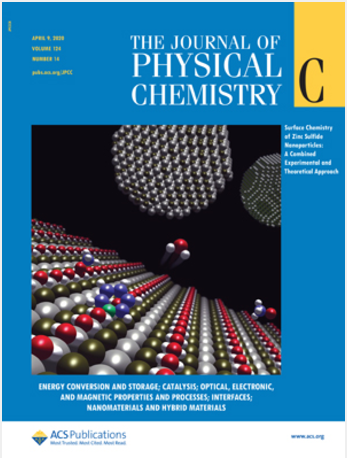Light-Controlled Electrostatic Self-Assembly of Quantum Dots
IF 3.3
3区 化学
Q2 CHEMISTRY, PHYSICAL
引用次数: 0
Abstract
Electrostatic self-assembly is one of the important self-assembly mechanisms that found use in optoelectronics. Although this method enables realizing unconventional architectures, producing complicated architectures in large areas requires local control over the self-assembly process. One of the ways to achieve this control is to provide enough kinetic energy to the self-assembling nanoparticles so that they can escape electrostatic attraction. We hypothesize that this energy can be delivered to the nanoparticles by treating them with light that can be absorbed by the particles. Here, we test this idea to tailor the electrostatic self-assembly of semiconductor quantum dots (QDs) using a laser. Employing fluorescence and atomic force microscopy, we demonstrate that the QDs are not attached to the substrate in regions where they are exposed to light while they are coated in the absence of optical excitation. We further conduct theoretical analysis to show that elevated temperatures indeed allow the QDs to escape the electrostatic attraction of the charged polymers on the surface. We also demonstrate that increasing the temperature during the coating process without irradiating the sample gives similar results as the case when the sample was irradiated. Finally, we fabricate an uncoated region on the self-assembled QD film with dimensions of ∼200 μm × 0.5 cm to demonstrate the feasibility of our approach to control the bottom-up self-assembly. We believe that our results may pave the way for a cost-effective and sustainable approach for the fabrication of nanoelectronic and optoelectronic devices.

求助全文
约1分钟内获得全文
求助全文
来源期刊

The Journal of Physical Chemistry C
化学-材料科学:综合
CiteScore
6.50
自引率
8.10%
发文量
2047
审稿时长
1.8 months
期刊介绍:
The Journal of Physical Chemistry A/B/C is devoted to reporting new and original experimental and theoretical basic research of interest to physical chemists, biophysical chemists, and chemical physicists.
 求助内容:
求助内容: 应助结果提醒方式:
应助结果提醒方式:


